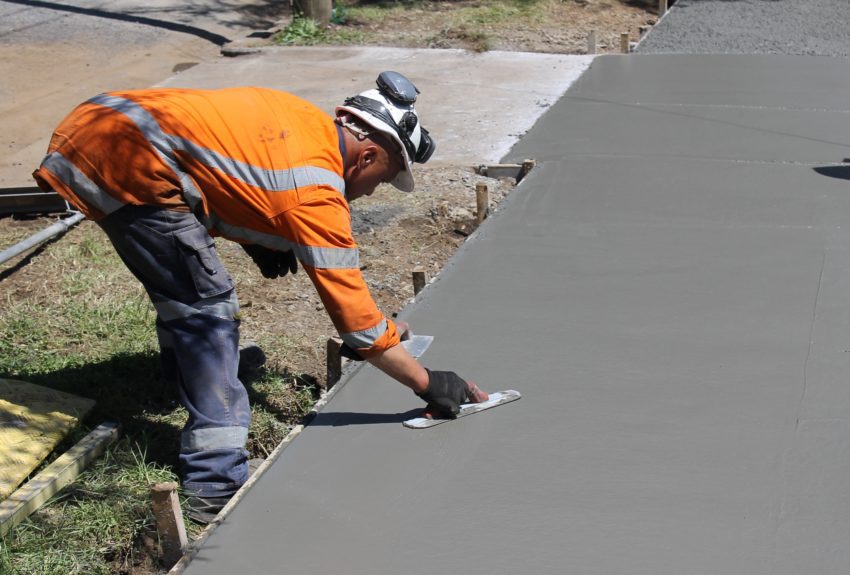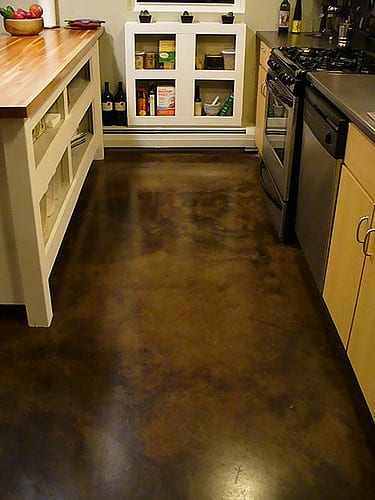Concrete floors are usually utilitarian, but every so often even they need a facelift. Scaling, spalling, checking, and mildew degrade the look and function of concrete. Sometimes the pour was poor, and the concrete isn’t level or smooth. If the floor is structurally sound but the surface isn’t acceptable, there are options besides breaking it up, tearing it out, and starting from scratch. Consider installing a concrete overlay. You can apply a concrete overlay using a 1/16-inch decorative coat or even a several-inches-thick concrete slab on top of an existing floor.
We’ll mostly focus on thinner overlays designed to dress up a countertop or floor.
Tools Used to Apply a Concrete Overlay
When applying a concrete overlay, you can typically use one of two kinds of tools. A standard float features oval ends and either a flat or slightly rounded middle. The float lets you push and pull concrete as needed in a thin layer to spread it across a wide surface.
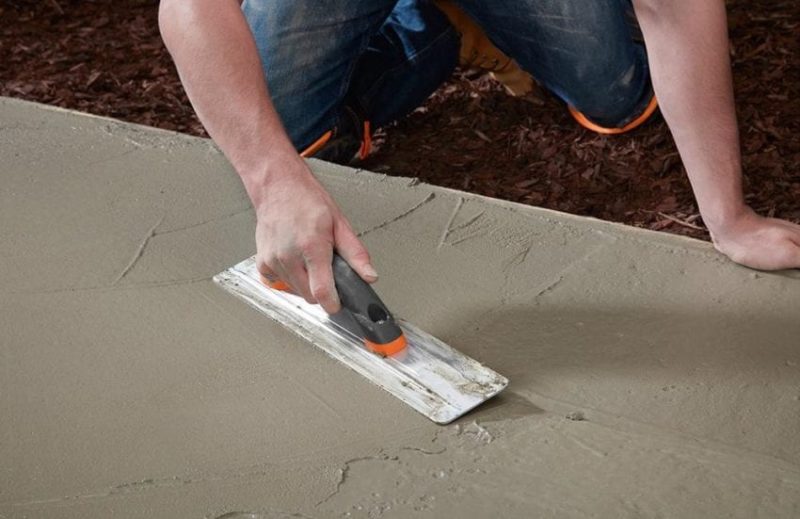
Another tool more closely resembles a trapezoidal squeegee. Some call this a “magic trowel” or knockdown knife. It features a flexible blade and takes a little bit of technique to use it.
The two tools deliver different finishes—and that determines which you want to use. Similar to how you might apply a skim coat of plaster or mud using a trowel, the magic trowel gives you a nice way to apply a thin coat of concrete.
Prepping for Applying Your Concrete Overlay
The first thing you’ll want to do is clean the existing floor with an appropriate detergent. Apply with a push broom and then pressure wash the concrete. Then, you’ll want to profile the existing floor with an acid made for concrete resurfacing or you can use diluted muriatic acid. Apply your acid with a push broom and wear appropriate clothing as well as breathing and eye protection. This is particularly important when you plan to apply a thin concrete overlay as opposed to new slabs.
You might also consider applying a densifier, like these, to make the concrete less porous. Densifiers prevent moisture migration through the existing floor. Basically, a concrete densifier is a chemical you would apply to a concrete surface in order to fill pores. This increases the surface density.
Next, you’ll want to patch large spalling or scaling. These are areas missing large chunks of material that need to be filled. Making sure the existing floor is as level and smooth as possible will make for a better-finished product. As with the acid resurfacer, this is more significant when you apply a thin concrete overlay compared to a new slab.
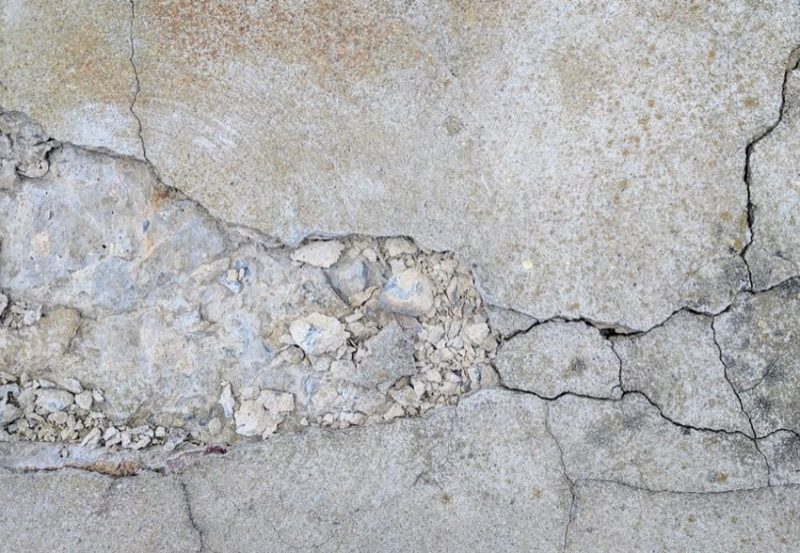
Consider using a bonding agent. Pros debate this step, but the difference of opinion probably lies with the smoothness or roughness of the concrete you’re resurfacing. Rougher surfaces usually don’t need a bonding agent.
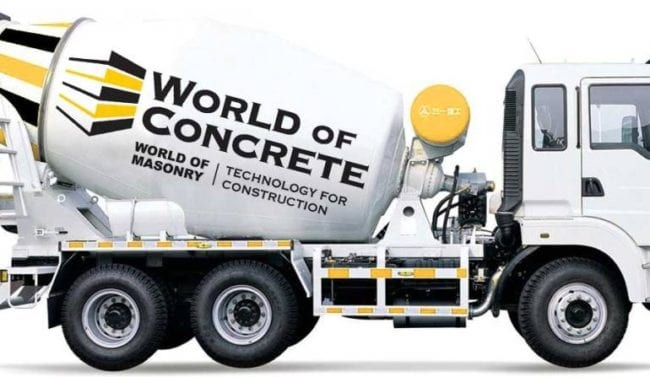
Pour and Float the Concrete Overlay
Next comes the part you’ve been waiting for—pour and apply the new concrete overlay on top of your surface. This might be a floor, sidewalk, or even a concrete countertop. Thinner, decorative overlays might have resins or other additives that require special priming (or even two prime coats).
Use a float, trowel, or concrete broom to level the wet concrete. As mentioned above, you can get different effects from the use of different tools. It just depends on what works for you and what kind of look you hope to achieve.
When applying an overlay, the big deal is getting a nice, even coat. You also want to make sure the new coat gets into corners and edges—completely covering the old surface. If not, you risk ending up with a very uneven look to your project. We typically start around the edges and work our way back and forth inward and towards the area behind you (assuming you’re on your knees doing the work in a larger area). This helps us not only ensure we don’t get ourselves into a corner, but it often makes the most efficient use of the material as you get a good feel for how much additional mixture you may need to complete the job.
After the Concrete Sets
After the new concrete sets, you’ll want to sand or scrape the floor till it’s smooth. Use a diamond disc or concrete scraper to smooth the surface to the desired smoothness or to prep for the second coat if necessary. Most of the time, this involves a floor sander or similar tool designed to take off any ridges and smooth surface ready for any finish coating.
If you do sand for a product designed as a multi-coat process, you often need to reprime after sanding. Then go ahead and apply that final coating. When applying new concrete to repair a driveway, walkway, or patio, you typically finish with a brush or other means of creating a nice flat finished surface.
Finally, you’ll want to seal the new surface. A sealant helps ensure the new surface lasts for years to come.
We hope you can save some time and effort for yourself and your customers by knowing how to apply a concrete overlay. If you’re a Pro and you have concrete overlay tips, add them in the comments below – or hit us up on Facebook, Instagram, or Twitter!

